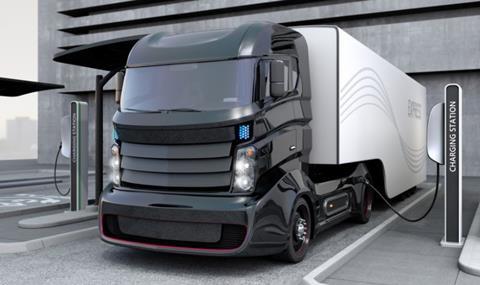
The European Automobile Manufacturers' Association (ACEA) is calling on national governments to ensure that the top 10% truck stop locations within their countries are equipped with suitable electric chargers by 2027, at the latest.
Research commissioned by the ACEA has shown that the best place to put electric charging points is at the locations most frequently used by truck drivers, since it is unlikely they will change their habits, as their employers make the switch to electric vehicles.
Working on this assumption, an analysis of the GPS coordinates of some 400,000 trucks in operation throughout Europe over a period of 12 months, found that 78,000 (50%) of total stops made by truck drivers are at just over 3,000 (10%) truck stop locations.
The analysis, conducted by Fraunhofer Institute for Systems and Innovation Research ISI, is one of the largest pieces of research of real-world data, examining the logistics activity of 400,000 trucks using 750,000 individual stops over a year.
The information was collected by all seven European truck manufacturers.
It aims to help governments and infrastructure operators prioritise where to start installing charging points for electric trucks.
Martin Lundstedt, chair of ACEA’s commercial vehicle board and chief executive of Volvo Group, said: “Battery electric trucks will play a major role in decarbonising road freight transport.
Read more
- Industry joins with National Grid to propose low cost, rapid roll-out of charging infrastructure
- Government pledges £1.6bn to new smart charging action plan
- Metro mayors restrict funding for EV charging points despite spike in demand
“If enough charging stations are rapidly installed across the EU, their market uptake will increase exponentially over the coming years.
“Given that charging stations that are suited to the specific needs of trucks are almost completely missing today, the challenge ahead is huge.
“That is why we want to help governments and industry stakeholders to direct their investments to where they are most needed,” he explained.
The researchers have created maps with precise locations of all truck stops in 29 European countries shown in five regions: central Europe, northern Europe, south-eastern Europe, southern Europe and western Europe.
The maps, available from ACEA, also distinguish the different stopping times of trucks – short stops of under an hour and long stops requiring overnight parking.
The researchers said this is important information as the duration determines the charging needs, such as the time available for a full recharge and the required power output.
They also identify exactly where the most used truck stops are found which are mainly in rest areas along motorways, company sites, logistic hubs and ports.














